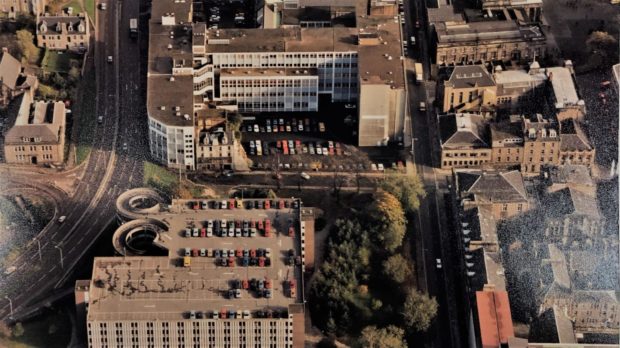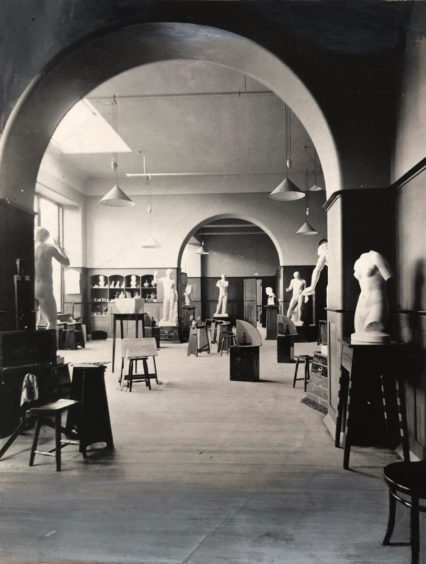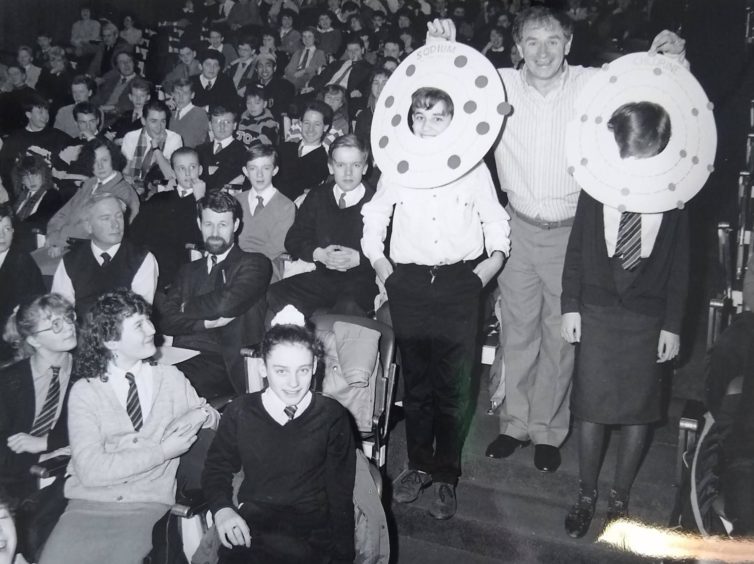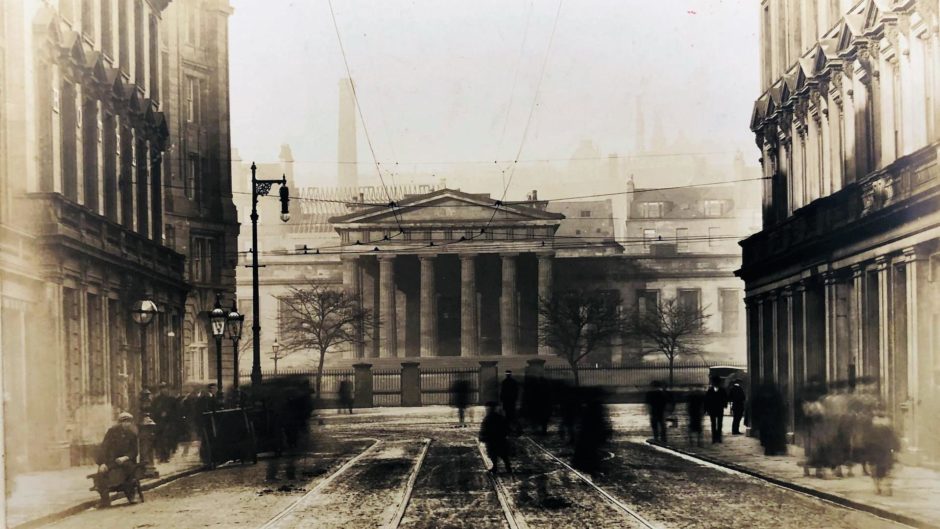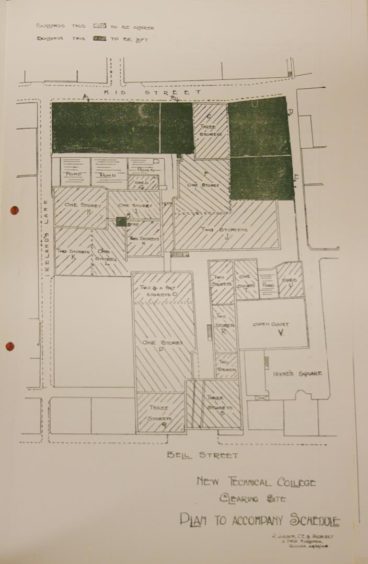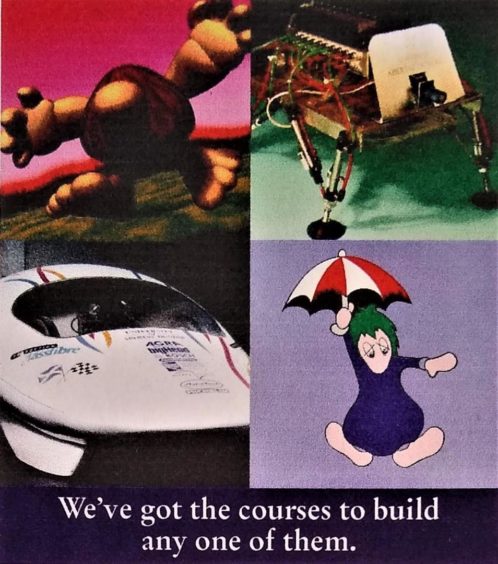Hidden treasures, held for years in the archives of Abertay University, are being opened up to a public audience for the first time.
The university has launched a new online archive and exhibition site, allowing people to explore its 133-year history from the comfort of their own homes.
Positive impact
The Abertay Archive website will open up the institute’s fascinating collections, showcasing the positive impact the university has had on both a Scottish and global scale.
Members of the public will be able to explore the history of the university for themselves, using an accessible, detailed online catalogue, view digital images that are more than a century old, and read articles.
There are also activities on offer, and plans are in place to hold ‘virtual exhibitions’ in the future, focusing on key aspects of Abertay’s history.
University archivist, Ruaraidh Wishart, said: “This represents a real milestone in the development of the university’s archive service, providing a public signpost for it, and an opportunity for the public to explore collections for themselves as they stay at home.
“We’re thrilled that we’re able to provide this resource publicising the university’s archives, and look forward to building on it.
“We’re really excited about plans to provide a portal where the public can submit items to the archive relating to their time here, or their memories of the university.”
High School
Among the images is a picture of Dundee High School which gives a rare view of what occupied the Bell Street site before the Old College of Abertay University was built upon it.
The chimney stack in the picture belonged to the Chapelshade Works, the site where Dundee’s first batch of jute was spun in the 1830s.
When Old College was built between 1907-1910, teaching rooms for jute weaving and spinning were included, carrying on the presence of the jute industry on the site until the closure of the department in 1984.
Sex Pistols
The site also shares stories such as the time The Sex Pistols played on campus before being banned from playing a larger gig at the Caird Hall in 1976.
It happened at the students’ union of the Technical College, which was known as the Bowling Alley, which was a hangover from its days as a bowling alley in the 1960s.
At the time, no-one could have predicted that this would turn out to be the only Scottish date that the punk band ever played in their 1970s heyday.
The Pistols were due to return to Dundee to play the Caird Hall on December 1 that year but postponed to the 16th to appear on Bill Grundy’s TV show, when a surly and sweary performance changed music history forever.
On live TV guitarist Steve Jones responded to Bill Grundy’s dare that he say “something outrageous” with a four-letter word and turned the air blue.
The next morning Dundee District Council announced they would be looking into arrangements for the band’s future concert in the Caird Hall over fears that violence might break out.
Poster for the Sex Pistols (cancelled) show at Dundee Caird Hall (1 December 1976) @HistoryofSMC @GCPunkNewWave pic.twitter.com/8tcRY50pPu
— Scottish Post-Punk (@ScotsPostPunk) April 14, 2017
The organisers, the Dundee College of Technology Students Association, stated that the previous performance by the band at the Bowling Alley on October 12 had not been offensive.
They thought there would be little chance of violence in the Caird Hall and intended to go ahead.
However, the agreement for the booking also involved the owners, Dundee District Council, and it decided to cancel the booking.
Lottery funding
The website has been launched as part of the Abertay 25 project, which was funded by a National Lottery Heritage Fund grant.
Abertay began life as Dundee Technical Institute in 1888 and provided first-class education with a particular focus on preparing students for the world of work.
Mr Wishart said the official opening was 1888 but the prospectuses started in 1887.
Sir David Baxter of Kilmaron bequeathed £20,000 for the establishment of a mechanics institute in Dundee for “the education of boys and young men in those branches of learning necessary or useful for working mechanics and other craftsmen”.
After an initial test run of an initial syllabus under the administration of University College Dundee in 1887, courses were offered under its official name in 1888 in technical subjects, such as building construction.
Later courses in jute manufacture, electricity, and telegraphy followed, and provision was also made for providing applied art classes as well.
The Institute was initially established in a building within the precinct of University College Dundee in Smalls Wynd, but the accommodation proved insufficient, and by 1901-02 rooms were also used in the YMCA and at Dundee High School.
Work began on constructing new premises on West Bell Street, and this was completed in 1910, at which point, a year later, the institution would go on to be re-named the Dundee Technical College and School of Art.
It carried on under this name until 1933 when a new scheme of management formed an art college under the Duncan of Jordanstone Bequest and incorporated it into a governing body administering it and the technical college, forming the Dundee Institute of Art and Technology.
University status
The push for university status began in 1991, when UK Government policy to increase the number of students in higher education created opportunities for tertiary education institutions to become universities.
An initial attempt to become a university in 1992 failed, on the grounds that the college – which was by that time called Dundee Institute of Technology (DIT) – was too small.
This led to DIT launching a PR campaign to bring the student roll up to the 4,000 required to gain university status.
By early 1993, DIT had almost achieved the required figure and on August 17 1994, it officially became the University of Abertay Dundee following a public consultation.
More than 200 names were suggested which included the University of Invertay, the University of Tayside and Dundee University of Technology.
In the end they decided on the University of Abertay to express the links it already had with both Fife and Tayside.
To access the new website, visit: https://www.abertay.ac.uk/about/the-university/archive/
The catalogue can be accessed at https://archive.abertay.ac.uk/
